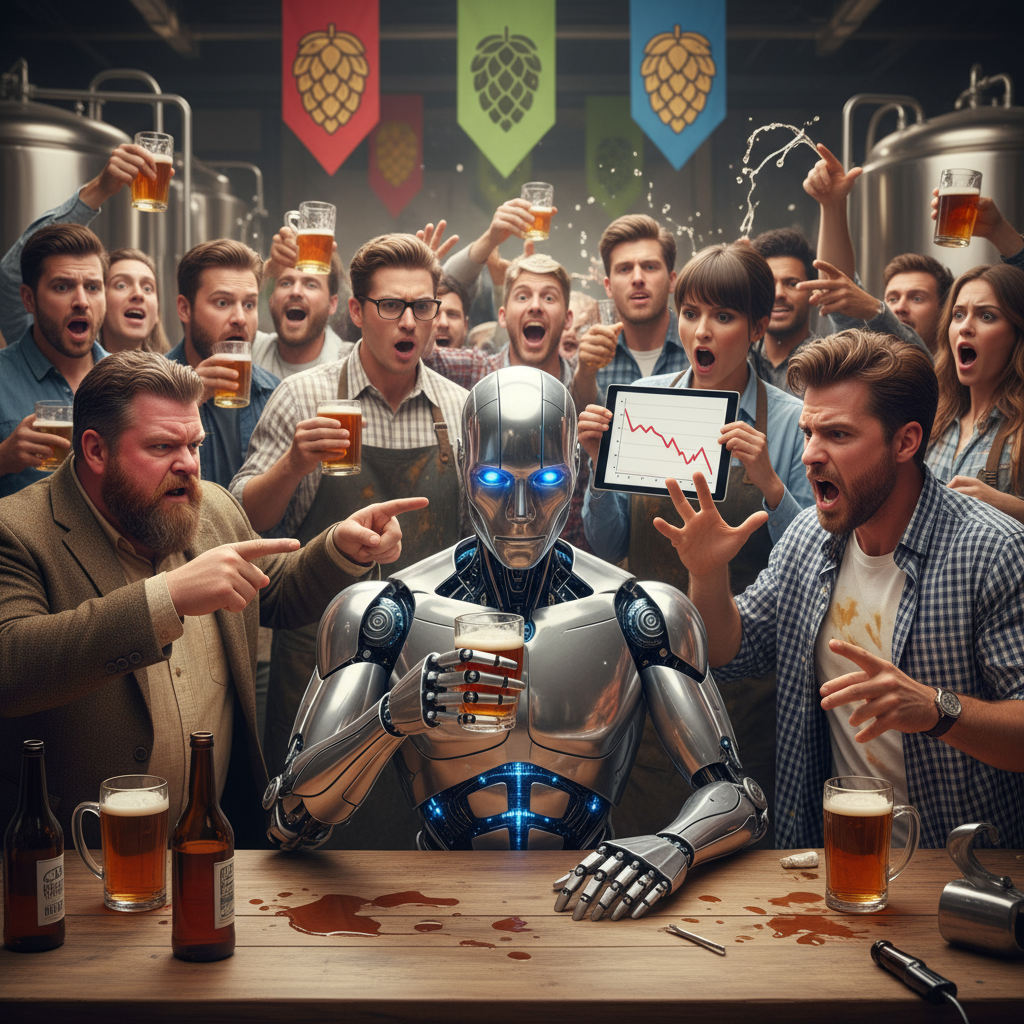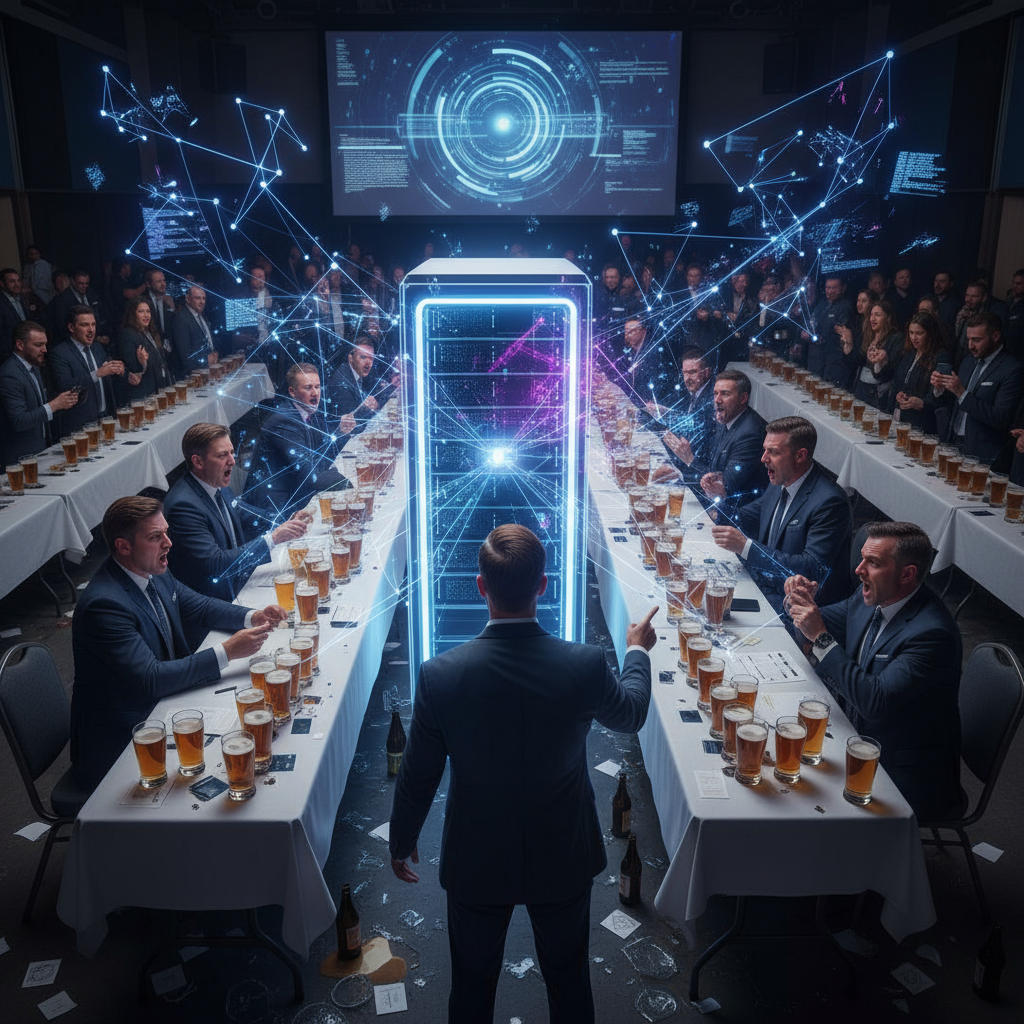When AI Tried to Judge Craft Beer: A Brewing Brouhaha

The craft beer industry prides itself on passion, artistry, and the human touch. Brewers pour their hearts into every batch, and judges, often seasoned experts with finely tuned palates, meticulously evaluate these liquid works of art. So, what happens when an unexpected guest, in the form of artificial intelligence, crashes this hallowed tradition? A prominent beer competition recently found out, to the audible displeasure of its judges and a significant portion of the wider brewing community.
Imagine a scene: dedicated judges prepare for a day of nuanced tasting, swirling glasses, and deliberating over the intricate balance of hops, malt, and yeast. Then, without warning, an AI-powered tool is unveiled as part of the judging process. The reaction, as you might expect, was anything but lukewarm. This move sparked a brewing brouhaha, igniting debates about the role of technology in sensory evaluation and the very essence of craft.
The Sudden Arrival of the Algorithm

The competition in question, a respected event within the craft beer world, blindsided its panel of human judges. Instead of a gradual integration or a transparent trial run, the AI-judging tool was simply *there*, presented as a new component of the evaluation. This lack of communication and consultation was a major point of contention, immediately raising red flags for those who dedicate their lives to understanding and appreciating beer.
The specific capabilities of the AI tool were not entirely clear to the judges at the outset. Was it designed to detect off-flavors, analyze chemical composition, or somehow simulate a human’s complex sensory experience? The ambiguity surrounding its function, coupled with its unannounced deployment, fostered an environment of skepticism and frustration. This wasn’t merely about resisting change; it was about a fundamental disruption to established and trusted practices.
The Uproar from Judges and Industry Insiders
The response from the human judges was swift and decidedly negative. Many felt their expertise was being undermined, if not outright dismissed. Judging beer isn’t just about identifying flavors; it’s about context, style adherence, overall drinkability, and the elusive “wow” factor that only a human palate can truly discern and appreciate. An AI, no matter how advanced, struggles with this subjective and holistic assessment.
Beyond the immediate judging panel, the news rippled through the craft brewing industry. Brewers, who often invest heavily in these competitions for feedback and recognition, expressed concern. Some wondered if the legitimacy of the awards would be compromised. The craft beer community, built on shared values of authenticity and skill, viewed this technological intrusion as a potential threat to its very soul. The sentiment was clear: machine learning might be great for data analysis, but can it truly appreciate the subtle artistry of a well-crafted stout or the delicate balance of a pilsner?
The Core Conflict: Palate vs. Program
At the heart of this controversy lies a fundamental question: can artificial intelligence truly replicate, or even meaningfully assist in, the sensory evaluation of a complex product like beer? Human palates are incredible instruments, capable of detecting minute differences in aroma, taste, mouthfeel, and finish. We bring a lifetime of experience, cultural context, and emotional connection to our sensory perceptions.
An AI, on the other hand, operates on algorithms and data. While it can identify chemical compounds and patterns, translating those into a subjective judgment of “delicious” or “balanced” is a monumental task. The human element in judging isn’t just about identifying flaws; it’s about appreciating nuances, recognizing innovation within style guidelines, and understanding the brewer’s intent. These are areas where AI currently falters, and perhaps always will, in our current understanding.
Lessons Learned (or Ignored?)
This incident serves as a cautionary tale for any industry considering a rapid, uncommunicated integration of AI into inherently human-centric processes. Transparency, consultation, and a clear articulation of the AI’s role and limitations are absolutely crucial. Without these, even well-intentioned technological advancements can be met with resistance and resentment.
The craft beer world, with its emphasis on tradition, experimentation, and community, might be particularly sensitive to such disruptions. For now, it seems the human palate remains firmly enthroned as the ultimate arbiter of good beer. While AI may offer valuable analytical tools in brewing – perhaps for quality control or recipe optimization – its role in sensory *judgement* remains highly contentious. The recent uproar confirms that the art of craft beer, for many, is still best appreciated by human experts, not algorithms.
The Future of AI and Artisanal Delights
Will AI ever truly “get” craft beer? Perhaps it will evolve to detect an even wider array of compounds or simulate taste receptors with incredible accuracy. However, the subjective pleasure, the emotional connection, and the cultural context of enjoying a fine brew are deeply human experiences. This recent episode in the world of craft beer competitions underscores that for certain artisanal pursuits, the irreplaceable value of human expertise still reigns supreme. The lesson is clear: when introducing technology into realms of human artistry, respect for tradition and clear communication are as vital as any new algorithm.

